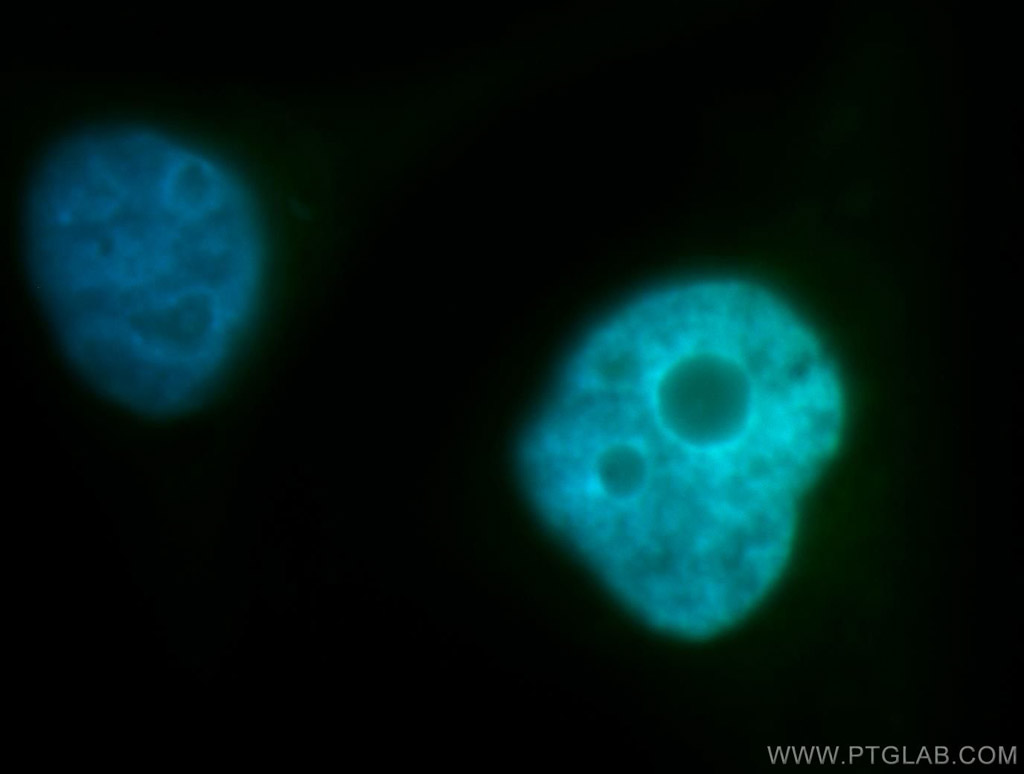BUB3 Polyclonal antibody
BUB3 Polyclonal Antibody for IF/ICC, ELISA
Host / Isotype
Rabbit / IgG
Reactivity
human, mouse, rat
Applications
IF/ICC, ELISA
Conjugate
Unconjugated
验证数据展示
经过测试的应用
| Positive IF detected in | HepG2 cells |
推荐稀释比
| Application | Dilution |
|---|---|
| Immunofluorescence (IF) | IF : 1:20-1:200 |
| It is recommended that this reagent should be titrated in each testing system to obtain optimal results. | |
| Sample-dependent, Check data in validation data gallery. | |
产品信息
10123-2-AP targets BUB3 in IF, ELISA applications and shows reactivity with human, mouse, rat samples.
| Tested Applications | IF/ICC, ELISA |
| Tested Reactivity | human, mouse, rat |
| Immunogen | BUB3 fusion protein Ag0167 种属同源性预测 |
| Host / Isotype | Rabbit / IgG |
| Class | Polyclonal |
| Type | Antibody |
| Full Name | budding uninhibited by benzimidazoles 3 homolog (yeast) |
| Synonyms | BUB3, BUB3L, hBUB3 |
| Calculated Molecular Weight | 37 kDa |
| GenBank Accession Number | BC005138 |
| Gene Symbol | BUB3 |
| Gene ID (NCBI) | 9184 |
| RRID | AB_2066209 |
| Conjugate | Unconjugated |
| Form | Liquid |
| Purification Method | Antigen affinity purification |
| UNIPROT ID | O43684 |
| Storage Buffer | PBS with 0.02% sodium azide and 50% glycerol pH 7.3. |
| Storage Conditions | Store at -20°C. Stable for one year after shipment. Aliquoting is unnecessary for -20oC storage. |
背景介绍
BUB3 is a conserved component of the mitotic spindle assembly complex and is an essential compent of spindle-assembly checkpoint (SAC) signaling that operates during early embryogenesis. BUB3 null embryos treated with a spindle-depolymerising agent fail to arrest in metaphase and show an increase in mitotic disarray. In mitosis, the SAC prevents anaphase onset until all chromosomes have been attached to the spindle microtubules and aligned correctly at the equatorial metaphase plate. BUB3 is involved in promoting the establishment of correct kinetochore-microtubule (K-MT) attachments in mammalian oocyte meiosis.
实验方案
| Product Specific Protocols | |
|---|---|
| IF protocol for BUB3 antibody 10123-2-AP | Download protocol |
| Standard Protocols | |
|---|---|
| Click here to view our Standard Protocols |
